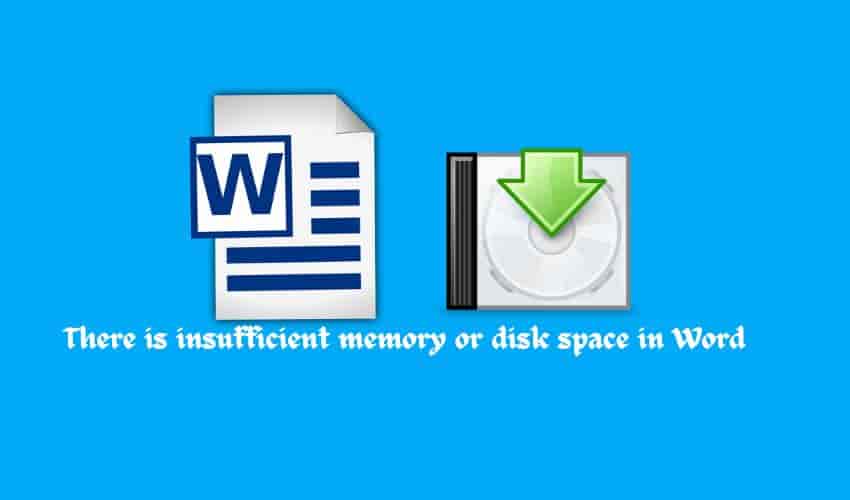Continuously try to open your Word file, but you cannot because of the error message saying “There is insufficient memory or disk space.” If you have a similar scenario, then you’re in the right place.

This error occurs due to several causes, such as corrupted add-ins and font caches, insufficient RAM storage, and file permissions, which could be majorly contributing to the problem.
Now, it is time to go thoroughly towards the troubleshooting journey.
First of all, ensure that, if you have almost full storage, you start deleting unused files from your MS Word and verify that your RAM has sufficient storage to run MS Word smoothly.
Another thing included in basic checks is that you have too many opened Chrome tabs that suck up the storage and interrupt the MS Word functionality. Keep in mind that you have to manage your device’s storage. It’s up to you now what things you want to delete from your device to maintain sufficient storage to operate MS Word firmly.
After performing basic fixes, if you don’t get results, try troubleshooting methods.
Manage the file permission
It will unblock the file for you. To do that, follow these steps:
- Select the file that caused the error, then right-click on it.
- Opt for the Unblock option at the bottom and choose OK.
Remove the Normal.dotm file
The normal.dotm file holds the various default settings to operate MS Word firmly, but when the template gets corrupted, it starts interfering with the functionality, which is one of the reasons for this error. At that time, you have to delete this file and make a fresh one by following these steps:
But make sure you perform all the steps after closing Microsoft Word.
- Access the file by pressing Windows + E.
- Go to the path: C:\Users\username\AppData\Roaming\Microsoft\Templates
- Navigate to the Normal.dotm file and remove it by selecting the Delete option.
- Then restart your device.
Manage the font permissions
- Start pressing the Windows + R keys to open the Run dialogue box.
- Then enter the PowerShell in the text box, and to launch it, just press Ctrl + Shift + Enter.
- Copy and paste the following commands, and then press the Enter key for each command.
- Get-acl C:\Windows\fonts\arial.ttf | Set-Acl -path c:\windows\fonts\.
- Get-acl C:\Windows\fonts\arial.ttf | Set-Acl -path c:\windows\fonts
Rebuild the font cache
- To open a document, navigate to New > Text by right-clicking on the desktop.
- Copy and paste the below command.
@echo off
Stop and disable the “Windows Font Cache Service” service.
:FontCachesc stop “FontCache”
sc config “FontCache” start=disabled
sc query FontCache | findstr /I /C:”STOPPED”
if not, %errorlevel%==0 (goto FontCache)
Grant access rights to the current user for the “%WinDir%\ServiceProfiles\LocalService” folder and contents of “%WinDir%\ServiceProfiles\LocalService”/grant “%UserName%”: F/C/T/Q
del /A /F /Q “%WinDir%\ServiceProfiles\LocalService\AppData\Local\FontCache\FontCache”
del /A /F /Q “%WinDir%\System32\FNTCACHE.DAT”
Enable and start the “Windows Font Cache Service” service.
sc config “FontCache” start=auto
sc start “FontCache”
- Go to File > Save.
- Then give a name to the file and add it. bat as an extension
- Further, right-clicking on the Notepad file and choosing Run as the administration
- Restart your device.
Reinstall or repair MS Office
A fresh installation helps you get rid of the issue, or you can also repair it by following these steps:
- Start pressing the Windows + X keys and choose the Apps and Features
- Opt for MS Office in the app list.
- Select the Modify option and choose Yes.
- Choose Repair and click on Continue to complete the process.
Bottom Line
First, make sure what the main causes are behind your problem, and then choose the appropriate troubleshooting methods from our guide to get results in a single click.